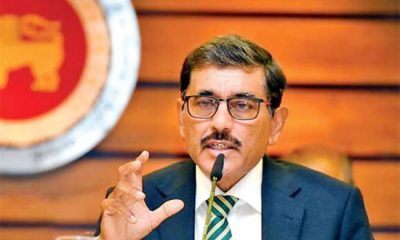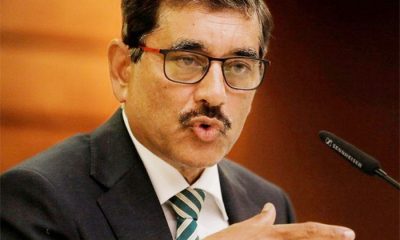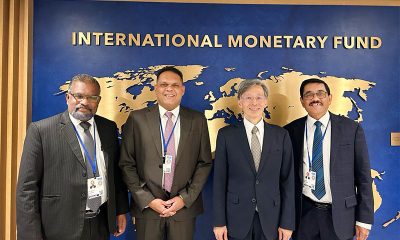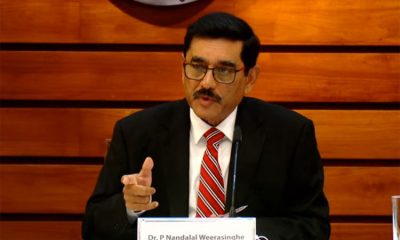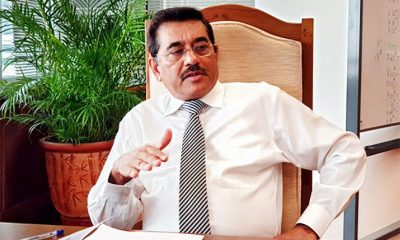Business
‘Organised defaulters’ may make bank loans harder for genuine businesses
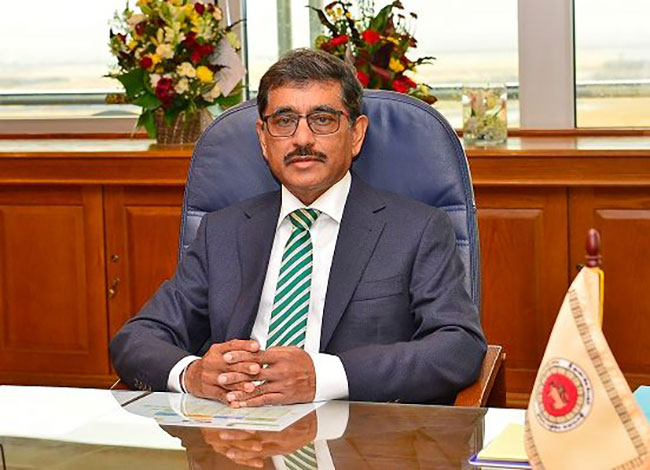
By Sanath Nanayakkare
Officials of the Central Bank have to grapple with ‘growth versus inflation’ dynamics to determine Sri Lanka’s economic future in another challenging New Year which has just begun. In addition to that they have found another unenviable task in encountering vociferous opponents of the banking system’s parate execution which is apparently being enforced as a last resort.
This was evident during the Q& A session the media had with Central Bank Governor Dr. Nandalal Weerasinghe on Friday where the Bank released its first-ever Financial Stability Review after gaining independence from Sri Lanka’s elected officials.
“A handful of organized loan defaulters are engaged in a vociferous campaign these days to avoid repaying loans they have taken from the banking system. But the Central Bank has a duty to recover the depositors’ money which has been lent to them, or else, the banks may become reluctant to loan money to even good borrowers in the future”, Dr. Weerasinghe warned.
“The Central Bank’s view is that parate execution is more important and essential for the protection of depositors’ money than for the stability of the banking system. The banking system distributes deposit funds of the general public among businesses as loans to stimulate the economy. However, when one borrows money from that deposit base and not repay it, the depositor’s money is at risk,” he said.
The Governor pointed out that the entire banking system has a deposit base of Rs. 16 trillion and depositors’ money account for 81% of the banking system’s liabilities.
“Bank shareholders have only a stake of 7% in this deposit base. So if any borrowers say that the money they have borrowed can’t be repaid or shouldn’t be recovered under parate execution, it is an unjustifiable claim. Now we hear the voices of an organized group that have the capacity to afford formal media events and say their defaulted loans shouldn’t be recovered under parate execution. This is akin to telling the depositors that ‘we have borrowed your money but we can’t pay it back.” If the depositors agree to that, it’s justifiable.
But the depositors won’t agree to that. The depositors are a silent majority community and their voices are not heard. Parate execution is enforced only when borrowers default on their loans; it is not enforced on those who make suitable arrangements to repay their loans. When the banks can’t recoup its losses under parate execution; they would be reluctant to give loans in the future even if one provides a property as collateral for repayment. So, the Central Bank has a responsibility to recover the money that belongs to the general public. If anyone is trying to disrupt the process, it’s a violation of depositors’ rights,” he said.
The governor pointed out that mainly short term deposits are used in giving long term loans and in the past 11 months, parate execution has been enforced on 557 persons recovering Rs. 38 billion.
“At a glance, it appears to be a big sum of money. But that is only 0.4% of the total bank loan portfolio. At present Stage-3 impaired loans stand at 13% which is a sum of Rs.1.4 trillion. Out of Rs. 1.4 trillion worth impaired loans, Rs. 38 billion came from parate executions. This means only 2.7% has been recovered under parate executions. If the banking system finds it unable to keep the enforcement of parate execution in effect, it will be a great injustice to the depositors because their money is borrowed and not repaid. Also, it will be an injustice to potential genuine borrowers because banks will be reluctant to give them money on credit.”
“These days you hear the voice of defaulters who make statements against parate execution at media events they have organized. And you will only see the depositors come to the picture when they find their savings are used in messy transactions. ETI, Golden Key and The Finance are good examples for this where depositors finally grouped up to make their collective voice heard. So, if the savings of millions of innocent people are misapplied by a handful of people and if they band together to prevent parate execution from being enforced, I think it would be great injustice.”
“The economic crisis brought its consequences without sparing anyone; not only borrowers, depositors were affected too. When inflation was 70%, depositors got a maximum interest rate of about 25%. That is how borrowers had to pay 30% interest rate. The Central Bank has issued 8 circulars with effect to giving crisis-hit businesses necessary moratoriums, relief measures, spreading out repayments, SME loans from ADB etc. And if the borrowers still have any grievances against their respective banks, there is a separate unit at the Central Bank to discuss such issues and see if a particular bank is deviating from the given norms.”
“But if it is identified that someone is shirking repayments, it is our duty to recover that money on behalf of the depositors and taxpayers because in the event of a crisis in the banking system, it will need to be borne by taxpayers and depositors,” he said.
The Governor went on to defend the banks making a decent profit through the activity of deposit taking, deposit interest payments and lending money at market rates throughout a financial year while robustly supporting the economy.
“When a bank makes profits, it has more capital to give as loans. That is why Rs. 450 bn has been allocated by the Budget from taxpayers’ money to strengthen the capital position of the state banks”, he pointed out.
The Governor urged sections of the media to not only highlight the story of the loan defaulters but also to train their cameras at the depositors and taxpayers.
“Are taxpayers willing to pay more taxes to give relief to a handful of loan defaulters or are depositors willing to sacrifice their funds to give relief to loan defaulters? That is the fundamental question we have before us and the general public needs to be made aware of it,” the Governor said.
Business
President and Indian PM jointly launch and inaugurate three development projects

The inauguration and commencement of three development projects implemented in the country with the assistance of the Indian Government took place on Saturday (05)
These projects include the commencement of construction of the Sampur Solar Power Plant, which will add 50 megawatts to the national grid, the inauguration of the Temperature and Humidity Controlled Agro Cold Storage complex in Dambulla and the installation of solar panels on 5,000 religious sites. President Anura Kumara Disanayake and Prime Minister Shri Narendra Modi jointly inaugurated and launched these projects via virtual technology following their official meeting at the Presidential Secretariat on Saturday morning.
Prime Minister Modi’s visit to Sri Lanka reaffirms the concept of “Friendship of Centuries, Commitment to a Prosperous Future,” strengthening the deep-rooted ties between the two nations.
The Sampur Solar Power Plant is part of the Eastern Renewable Energy Zone, which is being established under Sri Lanka’s Long-Term Generation Expansion Plan (LTGEP). It is being developed by Trincomalee Power Company, a joint venture between India’s NTPC Limited and the Ceylon Electricity Board (CEB).
The project is planned in two phases, with the second phase scheduled to commence in 2027. A 500-acre land area has been allocated for this initiative, under the first phase it will contribute 50 megawatts of electricity to the national grid. The project will incorporate state-of-the-art N-type TOPCon solar cell technology, enhancing energy security and promoting a shift from fossil fuel dependency to renewable energy sources. Consequently, the Sampur Solar Power Project is expected to reduce annual carbon dioxide emissions by approximately 200,000 tonnes.
The Dambulla Agricultural Storage Complex (Cold Storage Facility), with a capacity of 5,000 metric tons and equipped with temperature and humidity control, was inaugurated today with the objective of reducing post-harvest losses by approximately 40%, stabilizing fluctuations in agricultural product prices, ensuring the supply of high-quality food to consumers and enhancing agricultural sustainability.
To facilitate research on advanced storage methods for different crops, the facility includes six storage chambers, each designed to simulate various climatic conditions. This is the first facility of its kind in Sri Lanka, built at a total cost of LKR 524 million, with LKR 300 million provided as a grant by the Government of India and LKR 224 million contributed by the Government of Sri Lanka.
The Government of India has invested USD 17 million on the project to install solar panels on 5,000 religious sites and places of worship representing all major religions in all 25 districts. The nitiative, is being implemented jointly by the Ceylon Electricity Board, the Sri Lanka Sustainable Energy Authority and Lanka Electricity Company (Pvt) Ltd.
Under this project, 5,000 solar panel systems with a capacity of 5 kW each will be installed on the rooftops of Buddhist, Hindu, Muslim, Catholic and Christian places of worship. This is expected to add 25 megawatts of solar power capacity to the national electricity grid. The initiative underscores the government’s commitment to a cost-effective, sustainable and reliable energy system.
[PMD]
Business
Will the U.S. 44% Tariff on Sri Lankan Exports Harm Key Industries? Examining the Impact and Sri Lanka’s Path Forward – Ambassador Kananathan
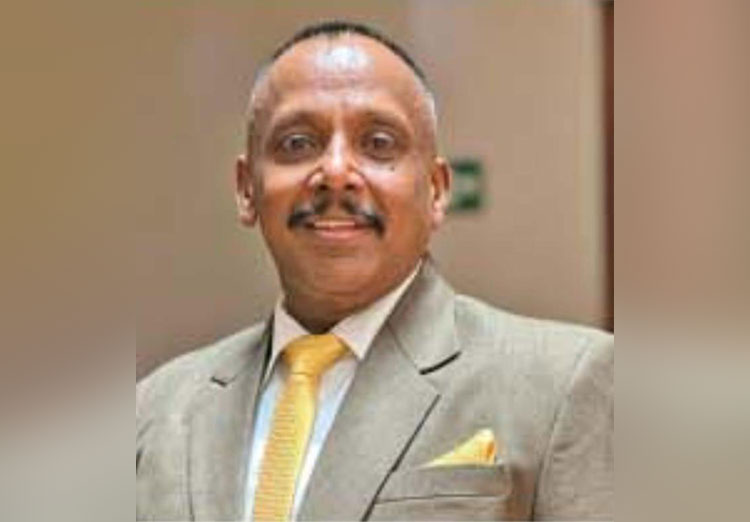
Sri Lanka’s export sector is grappling with a significant challenge following the United States’ decision to impose a 44% reciprocal tariff on Sri Lankan goods. This steep tariff threatens the country’s trade with the U.S., particularly in the apparel industry, which serves as a cornerstone of Sri Lanka’s economy.
Tea and Other Exports Also Under Threat
The repercussions extend beyond apparel, with tea exports at risk due to increased costs that may reduce Sri Lanka’s competitiveness against major producers like India, Kenya, and China. Other key export segments, including spices, seafood, and coconut-based products, are also likely to face price pressures, making it difficult for Sri Lankan exporters to sustain their foothold in the U.S. market.
Given that the United States is a major buyer of Sri Lankan goods, this move raises concerns about trade competitiveness, long-term sustainability, and economic stability. The question now is: how will this tariff impact Sri Lanka’s export-driven industries, particularly apparel, and what strategies can be employed to counteract the effects?
A Major Blow to the Apparel Sector – Sri Lanka’s Leading Foreign Exchange Earner
Ambassador Kana Kananathan, former High Commissioner to Kenya, has warned that this development could severely impact the apparel sector, which accounts for nearly 40% of Sri Lanka’s total exports. With U.S. buyers contributing approximately $3.3 billion annually, the apparel trade constitutes a crucial revenue stream for the nation.
A 44% tariff would substantially raise the cost of Sri Lankan apparel, making it less competitive compared to manufacturers in Bangladesh, Vietnam, Cambodia, and India. This could lead to a significant drop in orders from American buyers, posing a serious threat to the industry’s growth and employment rates.
Navigating the Challenge: Government and Industry Response
While immediate government intervention is necessary to mitigate these effects, businesses must also take proactive measures. Innovation, market diversification, and strengthening supply chain resilience will be essential strategies for overcoming these trade barriers. With the right approach, Sri Lanka can navigate this challenge and position itself more robustly in the global marketplace.
Ambassador Kananathan also suggested that exporters explore the ‘1/3 Cost-Sharing Model’ as a potential solution. Under this approach:
=Sri Lankan Manufacturers accept a partial reduction in profit margins, ensuring their products remain competitively priced.
=U.S. Retailers and Brands agree to absorb a portion of the tariff, recognizing the value of maintaining a reliable Sri Lankan supply chain.
=Raw Material Suppliers provide pricing flexibility, such as offering discounts or extending credit terms, to help offset cost increases.
By adopting these strategic adjustments, Sri Lanka’s export industry can mitigate the immediate impact of the tariff while laying the foundation for long-term trade resilience.
( Ambassador Kananathan was Sri Lanka”s former High Commissioner to Kenya and with concurrent accreditation to 23 African countries as well as Sri Lanka’s Permanent representative to UNEP and UN Habitat)
Business
Three Sinha Industries wins award for excellence at SLIA

Three Sinha Industries Pvt. Ltd. has been recognised with the Award of Excellence at the Sri Lanka Institute of Architects (SLIA) Annual Product Awards, held recently in Colombo. The award was presented for the company’s high-quality, fire-resistant doors, which are made using locally sourced materials and designed to meet the highest safety standards. The award ceremony was held recently in Colombo, and Managing Director Manjula Ariyakumara accepted the award on behalf of the company, marking yet another milestone in Three Sinha’s journey of excellence.
From its establishment as a small-scale business, Three Sinha has grown into a trusted name in Sri Lanka’s construction industry. The company has built a strong reputation for its commitment to quality, innovation, and reliability, earning both local and international recognition. Over the years, it has received several certifications for maintaining top-tier quality standards. Three Sinha has also received many other local and international awards.
Three Sinha Industries offers a diverse range of products and services, including roller doors, shutters, and fire-resistant doors that provide enhanced safety and durability. The company also specialises in aluminum fabrications, sensor doors, and automatic barriers, ensuring a comprehensive suite of solutions for the construction sector. Embracing sustainability, Three Sinha has expanded into green energy solutions, offering three types of solar PV electricity systems: on-grid, off-grid, and hybrid. Additionally, its subsidiary, IKLO Industries, focuses on pre-fabricated and pre-engineered steel buildings, incorporating advanced technology to meet modern construction demands. IKLO has also ventured into the agricultural sector by introducing tractor trailers tailored for farming needs. Moreover, the company manufactures high-quality diesel tanks that meet the standards of both the Ceylon Petroleum Corporation and the Indian Oil Corporation.
-

 Business2 days ago
Business2 days agoDaraz Sri Lanka ushers in the New Year with 4.4 Avurudu Wasi Pro Max – Sri Lanka’s biggest online Avurudu sale
-

 News7 days ago
News7 days agoBid to include genocide allegation against Sri Lanka in Canada’s school curriculum thwarted
-

 Business3 days ago
Business3 days agoStrengthening SDG integration into provincial planning and development process
-

 Business2 days ago
Business2 days agoNew SL Sovereign Bonds win foreign investor confidence
-

 Features18 hours ago
Features18 hours agoStarlink in the Global South
-

 Sports4 days ago
Sports4 days agoTo play or not to play is Richmond’s decision
-

 Latest News6 days ago
Latest News6 days agoIPL 2025: Rookies Ashwani and Rickelton lead Mumbai Indians to first win
-
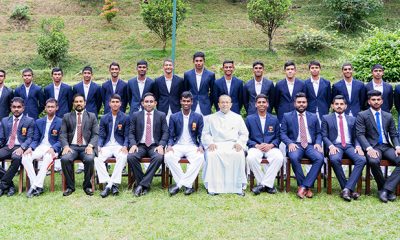
 Sports5 days ago
Sports5 days agoTrinity, St. Anthony’s out to end decade long victory drought


